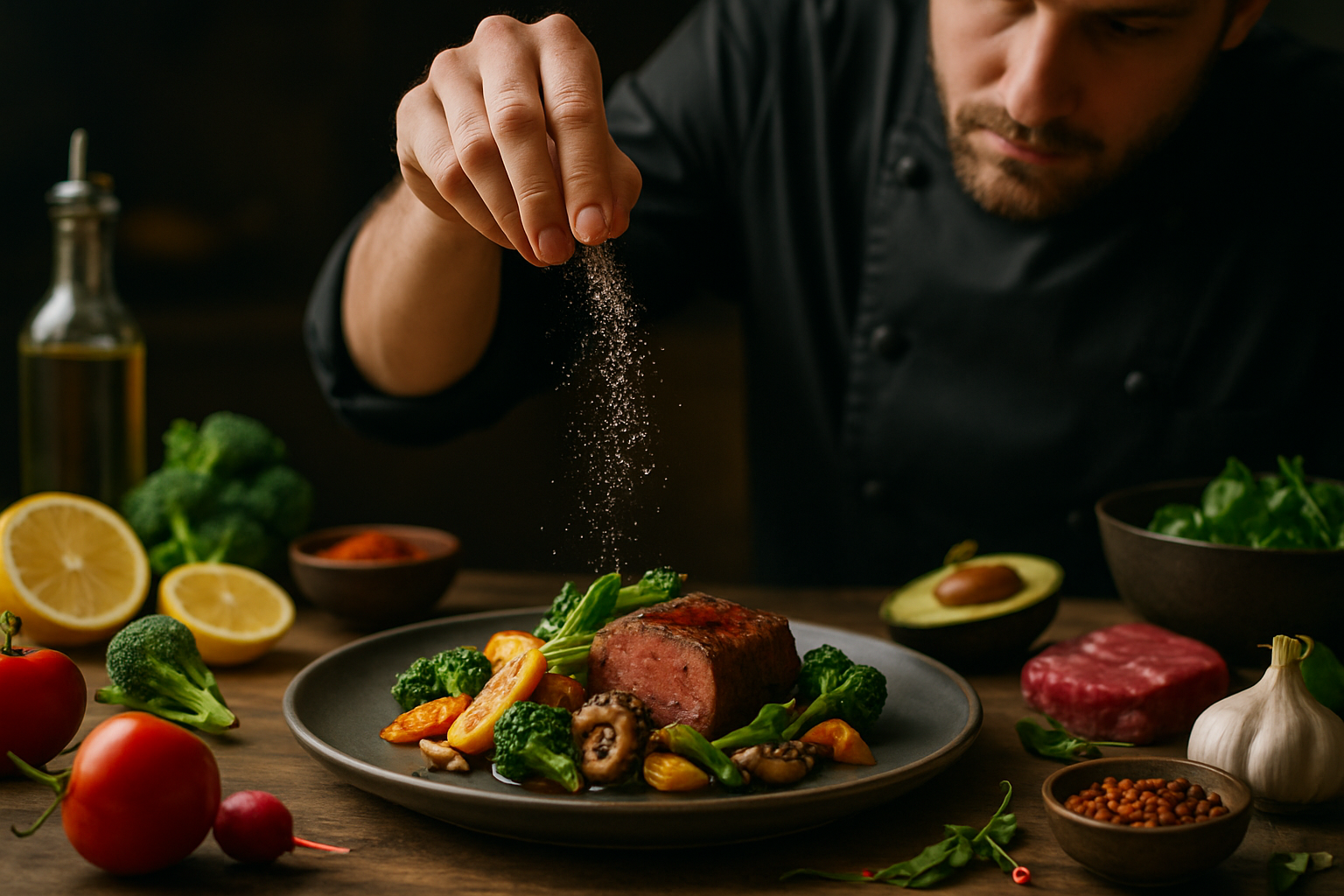Culinary Alchemy: Transforming Humble Ingredients into Gastronomic Gold
Unlock the secrets of elevating everyday ingredients into extraordinary dishes. This culinary journey explores innovative techniques and creative pairings that will revolutionize your approach to cooking, turning simple staples into gourmet masterpieces.

Unexpected Flavor Pairings
One of the most exciting aspects of culinary alchemy is the discovery of unexpected flavor pairings that can take a dish from ordinary to extraordinary. By challenging traditional flavor combinations, chefs and home cooks alike can create truly unique and memorable dining experiences. For instance, the addition of a pinch of salt to chocolate desserts can enhance the sweetness and complexity of the flavor profile. Similarly, pairing watermelon with feta cheese creates a delightful balance of sweet and salty that tantalizes the taste buds. Another surprising combination is the use of coffee in savory dishes, such as rubbed on steak or added to barbecue sauce, which adds depth and richness to the meat. Experimenting with contrasting flavors, such as spicy and sweet or umami and acidic, can lead to delicious discoveries that elevate simple ingredients to new heights.
Textural Transformations
Texture plays a crucial role in how we perceive and enjoy food. Culinary alchemists understand that transforming the texture of an ingredient can completely change its appeal and versatility. For example, cauliflower, often seen as a bland vegetable, can be transformed into a creamy, indulgent “rice” by pulsing it in a food processor. This not only changes its texture but also its culinary applications, making it a perfect low-carb base for various dishes. Another textural transformation is the crispy kale chip, which turns the leafy green into a crunchy, addictive snack. Even humble chickpeas can be roasted to create a crispy, nutty topping for salads or a protein-packed snack. By focusing on textural transformations, cooks can breathe new life into familiar ingredients, creating exciting dishes that engage multiple senses.
The Power of Fermentation and Aging
Fermentation and aging are powerful tools in the culinary alchemist’s arsenal, capable of transforming simple ingredients into complex, flavorful delicacies. These processes not only enhance flavor but also improve nutritional value and shelf life. Take kombucha, for instance, a fermented tea that has gained popularity for its probiotic properties and unique taste profile. Home fermentation allows for endless experimentation with flavors and ingredients. Similarly, aging can dramatically change the character of ingredients. Dry-aging beef concentrates its flavor and tenderizes the meat, while aging cheese develops complex flavor notes and textures. Even simple vegetables like garlic can be transformed through fermentation into black garlic, a sweet and tangy ingredient prized in gourmet kitchens. By harnessing the power of time and beneficial microorganisms, home cooks can create depth and complexity in their dishes that far exceed the sum of their parts.
Molecular Gastronomy at Home
While molecular gastronomy might seem like the domain of high-end restaurants, many of its principles and techniques can be applied in home kitchens to create stunning culinary transformations. Spherification, for example, can turn liquids into caviar-like spheres that burst with flavor in the mouth. This technique can be used to create fruit “caviars” for desserts or savory spheres to garnish soups and salads. Another accessible molecular technique is foam creation, which can add a light, airy texture to dishes. Simple ingredients like fruit juices or vegetable purees can be transformed into elegant foams using a hand blender and a bit of lecithin. Even the humble carrot can be turned into a delicate powder using maltodextrin, adding a burst of intense flavor and interesting texture to dishes. By incorporating these techniques, home cooks can add an element of surprise and sophistication to their culinary creations, turning everyday meals into gastronomic adventures.
Culinary Alchemy Tips & Facts
• Use a blow torch to quickly caramelize sugars on fruits for an instant flavor boost.
• Freeze herbs in olive oil cubes for ready-to-use flavor bombs in cooking.
• Dehydrate fruit slices to create natural, flavorful garnishes for cocktails.
• Infuse oils with spices or herbs to add complexity to simple dishes.
• Use a cream whipper to create instant, flavored foams for garnishing.
• Transform tough cuts of meat by slow cooking or using a pressure cooker.
• Experiment with different salts to add unique mineral flavors to dishes.
• Use edible flowers to add visual appeal and subtle flavors to salads and desserts.
In conclusion, culinary alchemy is about more than just cooking; it’s about reimagining the potential of ingredients and pushing the boundaries of flavor and texture. By embracing these principles, home cooks can transform their kitchens into laboratories of gastronomic innovation, creating dishes that surprise, delight, and satisfy on a whole new level. The journey of culinary alchemy is endless, with each experiment leading to new discoveries and inspirations. So, roll up your sleeves, embrace your inner alchemist, and start turning those humble ingredients into culinary gold.





